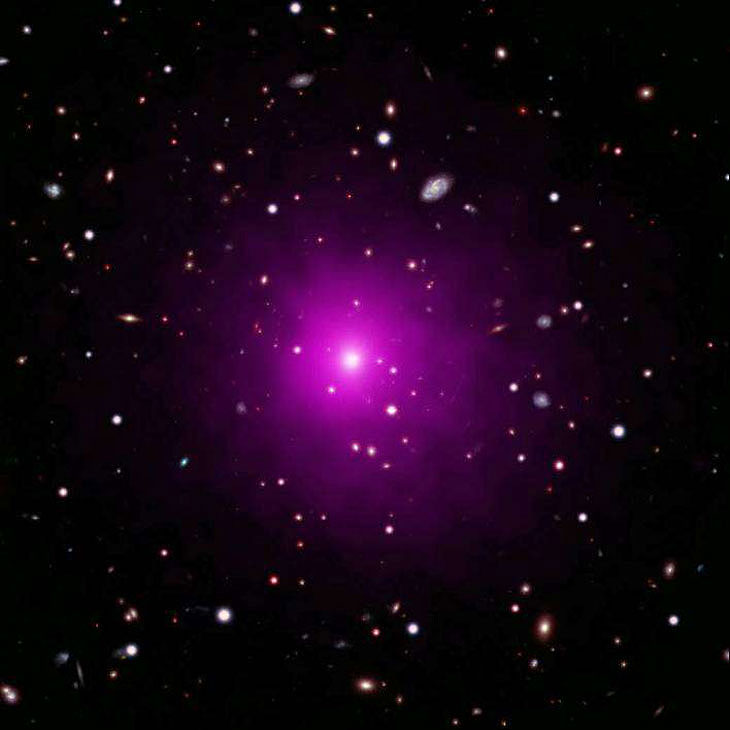
For several years, data collected by the world’s most advanced telescopes have been sifted through in hopes of identifying a “fugitive” supermassive black hole. Supposed to be in a very distant galaxy, this one desperately escapes astronomers.
A real enigma
Supermassive black holes are estimated to be lurking within every galaxy. The one in the center of the Milky Way is worth more than 4 million solar masses, while the object in the heart of the galaxy M87 reached the overwhelming figure of 2.4 billion solar masses. Logically, the supermassive black hole of the large central galaxy of the cluster Abell 2261, located about 2.7 billion light years from Earth, should be even more imposing (between 3 and 100 billion solar masses). But until now, this exotic object has never been detected.
X-rays are a potential signature of a black hole: When matter falls into the black hole’s mouth, it accelerates and heats up tremendously, emitting a lot of high-energy X-rays. Analysis of data from the center of the galaxy, collected by the X-ray observatory Chandra in 1999 and 2004, having given nothing, the authors of this new study, accessible from the pre-publication server arXiv, drew on data from 2018 and expanded their research to take into account the possibility that the black hole was pushed further away as a result of a monstrous galactic merger.

When black holes and other massive objects collide, they cause ripples in space-time, called gravitational waves. If the emitted waves are not symmetrical in all directions, they can hypothetically end up pushing the fused supermassive black hole away from the center of the newly enlarged galaxy. But such a phenomenon has never been definitively proven.
Signs of a dramatic merger in the central Abell galaxy 2261
” Currently, we do not know if supermassive black holes can get close enough to produce gravitational waves and merge. So far we have only observed the mergers of much less massive objects », Commented officials of the NASA. ” Detecting retreat of supermassive black holes would be an encouraging discovery for scientists using and developing observatories to research gravitational waves generated by the fusion of supermassive black holes. “
According to NASA, the central galaxy ofAbell 2261 is a good place to look for such an event, as it shows several possible signs of a dramatic merger. Observations made using the space telescope Hubble and the terrestrial telescope Subaru notably showed that its core, the region with the highest density of stars, was much larger than expected for a galaxy of this size, while the densest star spot, ” surprisingly remote Was about 2,000 light years from the center of the galaxy.

As part of this new study, the team led by Kayhan gultekin of the’University of Michigan discovered that the densest concentrations of hot gas were not found in the central regions of the galaxy, but data from Chandra did not reveal any significant sources of X-rays, neither in the galactic nucleus, nor in the large star clusters more distant. The mystery of the missing supermassive black hole therefore persists.
The future James Webb space telescope should make it possible to see more clearly
However, this could be solved with the large and powerful space telescope James webb, successor of Hubble, scheduled for launch in October 2021. “ If James Webb doesn’t spot a black hole in the heart of the galaxy or in one of its largest star clusters, the best explanation will be that the black hole has receded well beyond the center of the galaxy. “, Estimated the researchers of theUS space agency.
In recent months, astronomers have announced the discovery of a galaxy capable of withstanding the voracious appetite of its black hole, and have also witnessed in real time a star being engulfed by one of these massive objects. .

